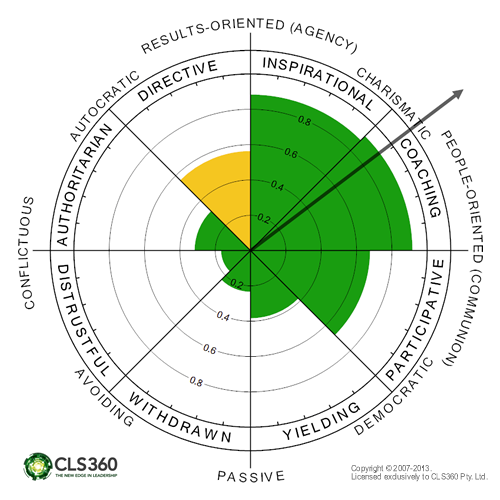Vector
The CLS360 identifies both the vector 'angle' and the vector 'length.'
The vector angle indicates the overall direction of the leadership styles. In the interpersonal research tradition, this is called the ʻinterpersonal (leadership) style.ʼ Generally, about 65% of the time, vectors point in the direction of Inspirational and Coaching, reflecting the average leader's flexibility to produce more behaviour in the three ʻgreen stylesʼ and less in the amber and red styles. Styles high in both Communal and Agentic behaviours are perceived as more effective, while the styles low in both Communion and Agency are perceived as less effective. If the arrow is pointing 'north' then a leader is motivated more by Agentic needs and might have a problem with Communion. If it points 'east' then a leader is motivated more by Communal needs. If the arrow is pointing more 'north-east' then this indicates that a leader has a socially desirable balance between both the Agentic and Communal needs.
The vector length shows the extent to which behaviours are used. For example, long vectors can be an indication of 'overuse' of particular behaviours, rigid behavioural patterns, and missing behaviours in a leader’s behavioural repertoire. Shorter vectors indicate greater access to all leadership behaviours required by the context. Very short vectors that only extend half way to the circumference can be an indication of under use of some behaviours.
